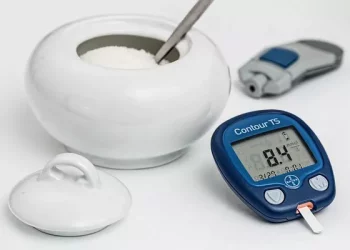A groundbreaking study in the UK is investigating the use of an at-home test to diagnose type 1 diabetes in children, marking the first time such a method is being explored.
Led by researchers at the National Institute for Health and Care Research (NIHR) Oxford Biomedical Research Centre, the study will involve 90 children and young people divided into two groups. The aim is to evaluate the GTT@home test, a new tool designed to assess how well the body processes glucose. The results of this trial could pave the way for the widespread use of the kit within the National Health Service (NHS).
Rabbi Swaby, the study’s lead researcher and clinical research fellow at the Nuffield Department of Medicine, highlighted the potential of the method as a “major breakthrough” in easing the burden of testing. The GTT@home is an oral glucose tolerance test (OGTT) that relies on finger-prick blood samples, which are then analyzed to determine glucose processing.
The kit, developed by UK-based diagnostics company Digostics, includes a finger-prick device, a glucose drink, and clear instructions. After the initial blood sample, the child consumes the glucose drink and has a second blood sample taken two hours later. Unlike traditional hospital-based OGTTs, which require fasting, early-morning travel, and two separate blood draws at a clinic, the GTT@home test provides instant results, which are sent directly to the research teams.
The GTT@home test has already been proven to be as accurate as hospital-based tests in adults and is currently being used for gestational diabetes screening in NHS trusts in Southeast England, where over 2,500 women have been tested since its launch in February 2024.
Type 1 diabetes, the most common autoimmune disease among children, affects roughly 1 in 350 children. Alarmingly, nearly 40% of diagnoses occur only after children develop diabetic ketoacidosis (DKA), a potentially fatal condition. Dr. Swaby emphasized that while OGTTs are crucial for early diagnosis, they are often poorly tolerated by young children. He believes that at-home testing could significantly alleviate this issue and improve early detection.
Related topics:
Study Reveals Link Between Zinc and Reduced Risk of Type 2 Diabetes and Fatty Liver Disease
New Research Offers Hope for Preventing Peripheral Neuropathy in Diabetes
Semaglutide Shows Promise in Reducing Alcohol Cravings, New Study Finds

























